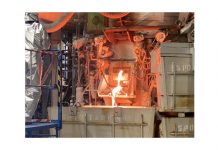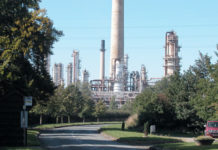With ambitious projects underway in the nuclear sector plus the rapid expansion of solar and wind farms, the cashable and time savings that 5G connectivity offers could prove crucial for project managers. But they will require strong contract administration and management, says CEMAR in this sponsored post
Digitalisation is sweeping every industry. From construction to implementation of services, the digital revolution is happening at every stage. This kind of connectivity requires strong infrastructure to handle millions of users, as we become increasingly reliant on digital methods of accessing and recording data it is crucial that we have a framework in place capable of keeping everything running smoothly. With 5G roll-out expected in the UK by 2020, we are on the cusp of the next age of digital connectivity.
5G connectivity is good news for everyone, from businesses to homeowners the roll-out will make the much talked about Internet of Things (and Internet of Energy) a daily reality, with endless possibilities available to the sector.
Smart Energy with 5G
We are all mindful of becoming more efficient with our energy and with 5G connectivity this can extend to infrastructure that has remained consistent for years. For example, intelligent street lighting, where street lights can dim when no activity is detected, could be a significant saving in both money and wasted electricity. This thinking can be used in other instances, such as smart grids, or smart meters, to help us understand how we consume energy and what we can do to improve.
On A Larger Scale
How can 5G benefit large-scale energy projects? We have previously written about BIM and Construction 4.0, but these cannot function optimally without 5G. With ambitious projects underway in the nuclear sector plus the rapid expansion of solar and wind farms, the cashable and time savings that 5G connectivity offers could prove crucial for project managers. The ability to walk onto a construction site, either during building phase or maintenance operations afterwards, and have a new clarity is exciting.
5G will enable all facets of a site to communicate with its workers. During construction phase, trends will be able to be recorded enabling new projects to learn from previous ones. The difficulties with maintaining complex structures such as wind turbines will be reduced, also benefiting the safety of workers.
Digital Data Management
Interconnectivity and the rise of digital data management will unlock the potential of the energy sector, resulting in innovation and a cleaner future. Digitalisation within businesses releases a massive potential for changing the landscape of the industry; but managing the digital revolution can seem like a big leap. CEMAR was created to handle the burden of contract administration during construction projects, to enable people and projects to take the first step on their path to digitalisation.
Find out more at cemar.co.uk
Related stories:
Unleashing the full potential of digitalisation with construction 4.0
Take back time for the things you love: Make contracts easy
CEMAR: The contract’s digital twin



